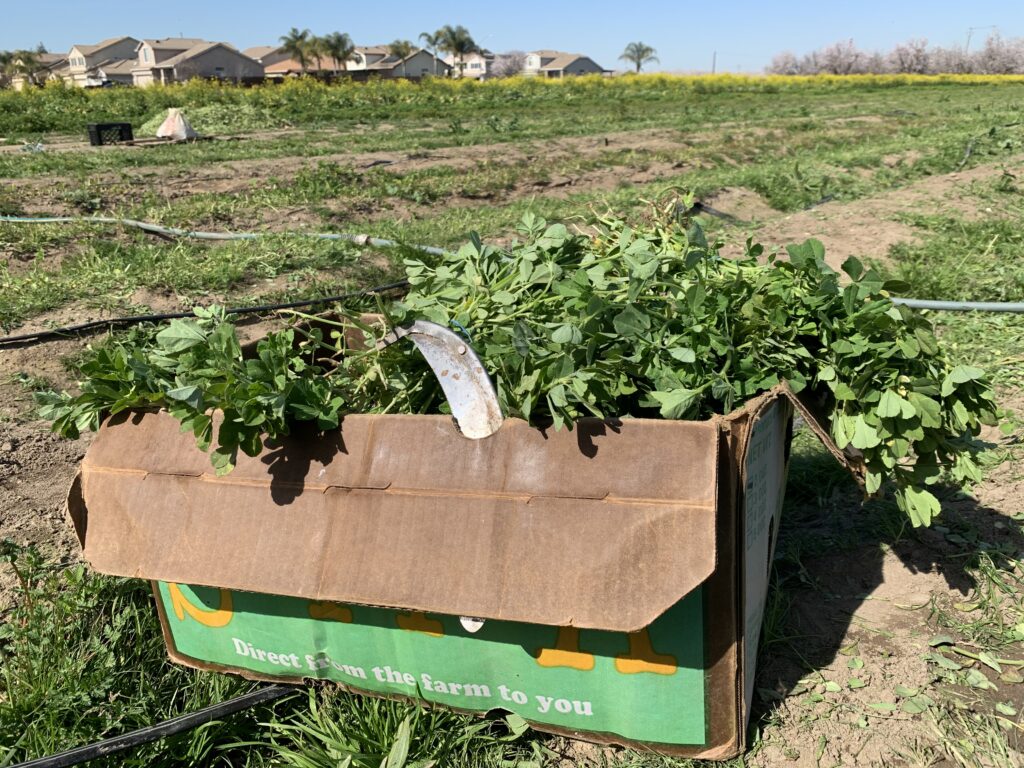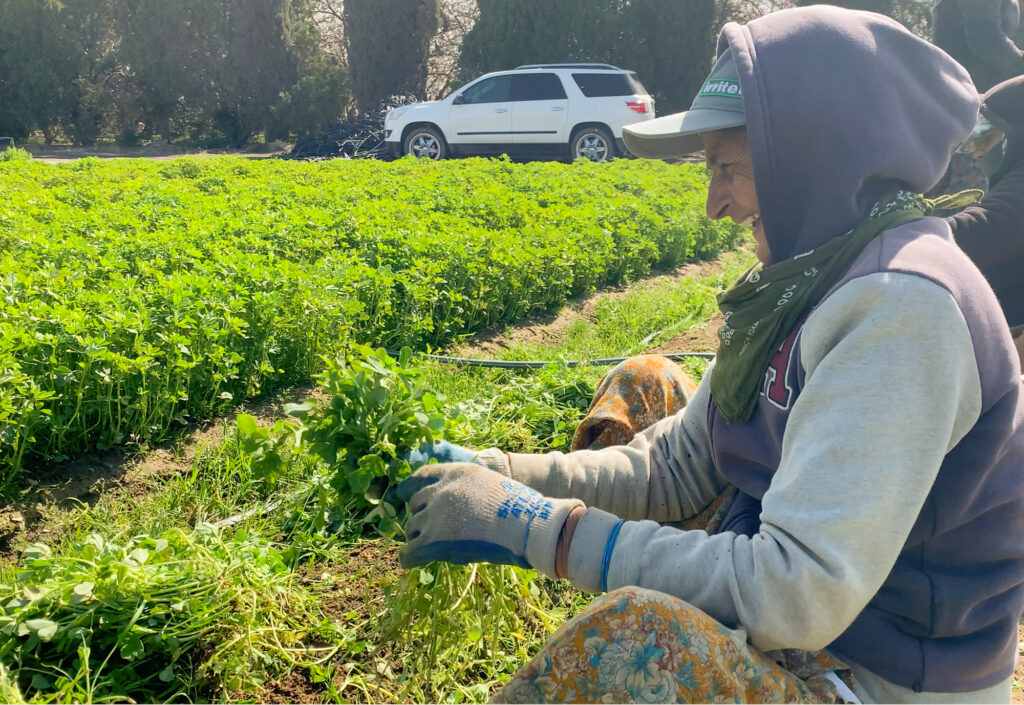Indian farmers bring sustainable practices to the states

Driving up a dirt road on the side of a suburban housing enclave in California’s Central Valley city of Livingston, bright green leaves of daikon and cultivated fenugreek are peaking out of the repeating, distinctly tilled rows among 20 acres of land.
The earthy vegetables appear ready to be picked.
A few Punjabi women and men are squatting, bending, pulling, extracting and cleaning vegetables.
The women are wearing traditional Punjabi salwaar kameez, which includes a set of pants and a long shirt with various prints and colors. The men don their heads with turbans. All the fieldworkers and farmers come from the province of Punjab, the northernmost region of India.
A makeshift market has been set up with multiple boxes and crates filled with produce directly from these vast green fields.
Punjabi families, through the word of mouth, have learned about this marketplace and have been coming because of the direct access to the familiar produce used in their traditional cooking.
Balwinder Singh, the owner of this farmland, grows vegetables that are common to the region of Punjab.
“We are a family of four and both of my sons drive trucks, but our family has been working in farming since our time back in Punjab,” Singh said. “Ever since I arrived seven years ago, I have been farming here. It is what I was doing back home, and it is what I know.”

Singh’s farm has a selection of vegetables that require ways of knowing cultivation and their appropriate seasons.
“I choose vegetables like fenugreek, eggplant, bitter melon and daikon only because they are season dependent. I only can grow what is seasonal,” Singh said.
Fenugreek is a green, leafy herb with a sweet, nutty taste. It often is used in stir-fry potatoes or in traditional style flat breads called roti. Fenugreek has nutritional benefits and is often used in alternative medicine, according to Healthline.
Daikon is a white, long, tubular root vegetable that is part of the radish family. It is typically grated with chilies and spices stuffed into parathas (another style of flat breads) as a breakfast dish. Daikon can be eaten as a crunchy side dish—cold and raw—with cooked meat.
Singh said he will grow only what is seasonal because that is how the land is supposed to be cultivated and that is how he farmed in Punjab.
“We do this work on multiple farms where we plant, water and monitor the fields often. It requires a lot of time and patience,” he said. “The U.S. has rougher soil here than in India, and it requires a bit more care and understanding.”
The Singh family lives on farmland in the Central Valley and they integrate their farming knowledge from Punjab here in California.
“The land here is easier to maintain and sustain because the strategies here are more efficient than back in Punjab,” said Bobby Singh, the son of Balwinder Singh, who is supporting his family’s farming business. “Strategies include how to prevent bug manifestations and relying on efficient water mechanisms.”
Bobby Singh said that the biggest challenge is preparing for harvest and understanding how to market the produce.
“It all has to look pretty for the markets,” he said. “We spend a lot of time on packaging and putting produce together in the way markets across California want them for their shelves,” Bobby Singh said. “This is part of who we are and are comfortable with this lifestyle. We do this because we know it. If I was in India, I would be doing the same thing.”

Indian Farming History
“At the time of Independence, 70% of India’s workforce, worked in the agricultural sector and was 54% of the nation’s income, which has now declined to 17%”,” according to Indian Express.
“More than 60 percent of India’s 1.3 billion people still depend primarily on agriculture for their livelihood, though the sector accounts for only about 15 percent of the country’s economic output,” according to The New York Times.
In California, many Punjabis have found themselves re-introducing farming to their newly established communities.

Heather L. Benson, a doctoral candidate in Human-Cultural Geography and instructor at Lake Tahoe Community College, said that Punjabi Sikhs have adapted to the agricultural way of living in the Central Valley of California, particularly because they know how to manage the land.
Sikh migrants began arriving in California in the early 1800s and were attracted to California because of its farming opportunities and agricultural markets, according to California Law Review.
Benson, in her master’s thesis, focused on foodways, a term coined by John W. Bennett. Foodways is considered a term to understand how beliefs and traditions are connected to food and how they formulate cultural identity among communities.
Benson said that growing what is part of your history provides a connection to your homeland and that, “Food is an anchor to cultural identity, and preserving the traditional diet is important to Sikh cultural identity.”
Langar, a communal meal, is prepared in a vast kitchen with many people handling all aspects of preparing and serving food to community members who attend the site for Sikh prayer known as the gurdwara.
Benson has seen everyone at gurdwaras come together to clean the food, prepare and cook the langar and wash the dishes.
She said that langar is a communal practice because, “Sikhs believe that you cannot focus on God if you’re hungry.”
The practice of nourishment allows one to stay connected to the homeland while also surviving in new places.
“Farming makes me feel good. When I wake up in the fields, there is a freshness in the air I don’t feel anywhere else,” Bobby Singh said. “My dream was to be a farmer even as a child. I grew up playing in the fields in Punjab. It is here, on the farm, that I feel the most satisfaction.”



